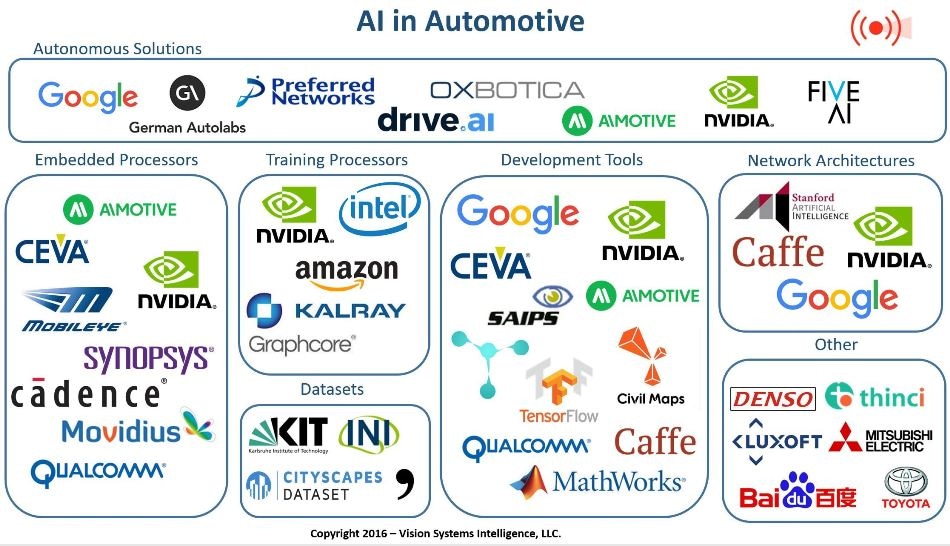Nov 16 2016
Artificial Intelligence (AI) is staged to become the next big breakthrough in automotive, particularly in the context of Highly Automated Driving (HAD), according to Vision Systems Intelligence (VSI). AI has proven its usefulness in many use cases from object detection and classification, to path planning, to predictive control. AI can even support the full driving process (end-to-end) where the computer gets trained by mapping sensor observations directly against known output (control).
 Credit: Business Wire
Credit: Business Wire
Why AI is Promising
Traditionally, a car with ADAS or automation would be programmed with detectors for many possible scenes or situations. They use deterministic algorithms that react to situations. There are no predictive maneuvers, everything is reactive to something that is observed.
“But proper driving as we know it today is more than reactive, it is also predictive,” says Phil Magney, founder and chief advisor for VSI. “There is considerable learning and judgment skill that can only be acquired through experience. Furthermore, proper driving requires the ability to make split second decisions, and do so in situations the driver may not have experienced before!”
AI within the context of automated vehicles has the ability the mimic how a driver could and should react to an event, even in situations it is not been explicitly trained in. The random nature of automation in unstructured environments requires the ability to handle an infinite number of situations from which decisions will need to be made. AI can support this process using trained neural networks that can “reason” with unknown situations and predict the best possible outcome and likely do it better than a human could do.
Like other machine learning methods – systems that learn from data – artificial neural networks (ANNs) are a form of AI that are enabled through a network of interconnected nodes. “AI based algorithms can cope with complex scene understanding better than rules-based algorithms, particularly when it comes to edge cases,” states Magney.
This does not mean that AI can do everything. Rules of the road are constantly changing so there needs to be underlying data assets that form the basis of a safety layer. This provides a localization method as well as safety mechanism that can cope with transient events that occur (i.e. temporary lane obstructions). AI can also be applied to the handling the large volumes of 3D data acquired through sensor aggregation. Likewise, using AI for building better mapping assets will be common practice in a few years.
AI in Automotive
AI for automotive is hot right now as nearly every major OEM and tier-1 is examining AI deployments within their own development activities.
The eco-system for AI in automotive has many branches to deal with different elements of the value chain. For example, data aggregation that gets used for network training includes massive volumes of data that must be collected, sorted and labeled. Clever approaches to data aggregation are popping up that use crowd sourced or swarm methods for collecting training data.
Another critical element to the value chain are the embedded processors necessary to support the inference layers (trained networks). Furthermore, the ability to optimize the pre-trained network for an embedded instruction set requires special development tools.
Training processors do the heavy lifting when it comes to AI training of neural networks. This is typically done off-line at the server and/or in the cloud. Massively parallel processor architectures can do this now and a handful of processor companies specialize in this space as well.